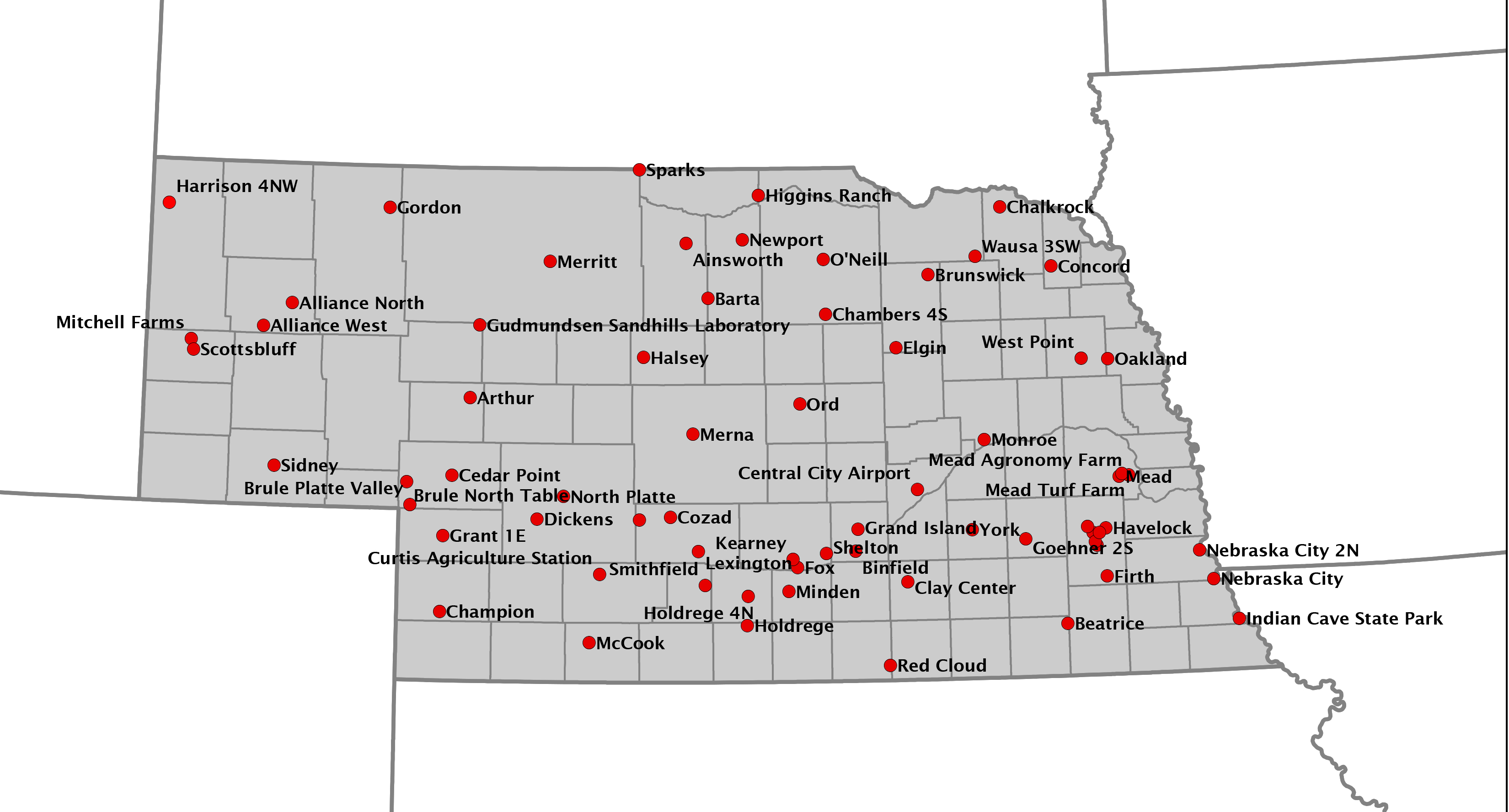
The newly formed Nebraska State Climate Office has set a goal of producing usable products with the information it collects through its statewide weather network, the Nebraska Mesonet.
To see where it should put its focus first, NSCO conducted a four-week survey of agriculture industry representatives through the University of Nebraska-Lincoln Extension CropWatch.
“NSCO wanted to assess what agriculturally specific information people are using in Nebraska and for what specific decisions,” said Martha Shulski, NSCO director and state climatologist. “Our purpose was also to establish a baseline needs assessment so we can track how needs change and evolve over time with future surveys. With this information, we will prioritize our product development to focus on the most utilized variables and in the preferred format.”
Based on the feedback collected, the climate office will focus on the visualization of the Nebraska Mesonet data first for its suite of website tools.
“Users will be able to view temperature, precipitation and many other observations in near real-time to help in their farming decisions,” Shulski said. “We will also be displaying calculated variables such as growing degree days and evapotranspiration — two very important metrics for producers.”
As the office runs maintenance checks on its weather stations this summer, it is updating each station’s communications capability so data can be reported hourly to the website.
Mesonet weather reporting sites in Nebraska
The Nebraska State Climate Office is updating Mesonet weather stations across the state this summer to provide more "real-time" reporting to the Web.
The NSCO website is due to go live in late summer or early fall, with additional tools for users being added as they are created.
All of these are in line with what survey respondents requested.
“Having one well-designed website for access to weather forecasts, GDD, soil temperatures, crop water use, etc., and tools would be great,” a respondent wrote.
Sixty-seven percent of respondents regularly sought out websites, such as the National Weather Service, CropWatch, and the High Plains Regional Climate Center, to access the data they want to use to make educated decisions. About 61% turned to local television stations for information, and 71% turned to smartphone apps.
“Because it’s easy,” another respondent wrote.
No matter the source, though, ease of use and mobile-friendly were the most important aspects to respondents. NSCO’s new site will be mobile friendly.
The site also will present data in map and table form, the two most common requests from respondents for making data easy to read and comprehend; 75 percent of respondents wanted to see data displayed on maps. Twenty-three percent wanted the data available in three forms: map, table and video.
As for what Mesonet-collected data they use, 100 percent of respondents said they use precipitation, air temperature, and soil temperature data, and 84 percent used short-term forecasting. More than half also used the 8- to 14-day forecast, soil moisture, evapotranspiration, growing degree days, humidity, soil temperature, seasonal forecast, and wind speed data. Less popular were air pressure, frost depth, or modeled weather products.
Respondents who identified themselves as crop producers, livestock producers, extension/government, or crop consultants/agribusiness emphasized that their farm management decisions rely heavily on climate and weather data, especially when determining when to plant and irrigate crops. Soil temperature was the critical variable for producers in deciding when to plant; soil moisture and evapotranspiration data were key to deciding on an irrigation schedule. Farmers looked to the data when determining when to apply fertilizer and when to harvest, as well.
With hourly updates to the data on the horizon, making those decisions will become easier in the near future.
More details at: http://go.unl.edu/2tgr